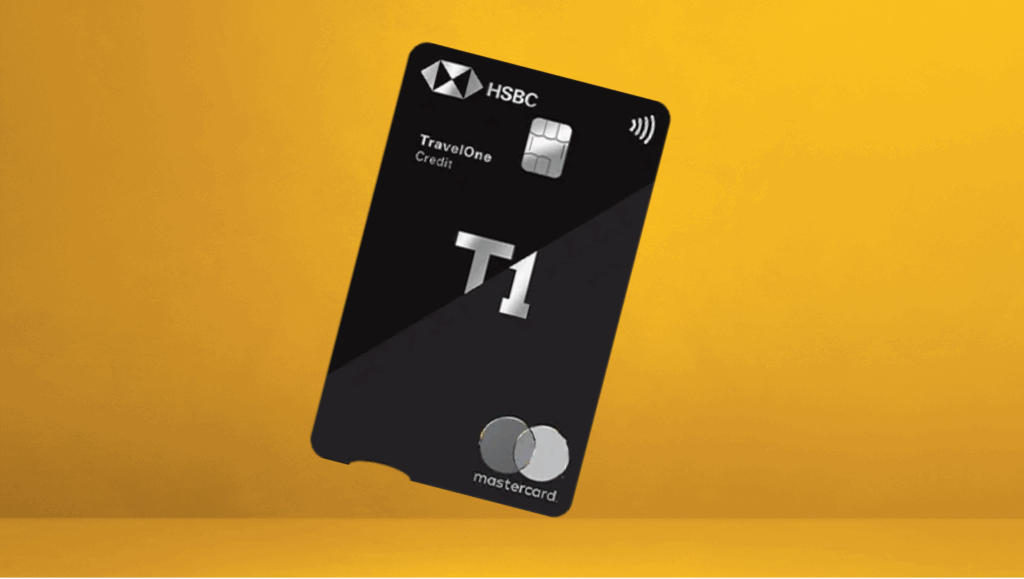
Shocking Rise in Insurance Mis-Selling: 45% Jump in Complaints Signals India’s New Consumer Awakening
India’s insurance world faces a shocking reality — a 45% spike in complaints reveals hidden mis-selling, disputed claims, and digital deception. As trust collapses and regulators tighten the net, are insurers ready for this new era of transparency — or will 2025 expose the industry’s biggest truth yet?
It began quietly—a few policyholders on social media narrating how they were “fooled” into buying investment plans disguised as life cover. Fast forward to Q2 2025, and the numbers have exploded. The Insurance Regulatory and Development Authority of India (IRDAI) registered a 45% rise in product-related complaints, the highest quarterly spike in over five years.
India’s insurance market, once hailed as a safety net for millions, now finds itself facing heightened consumer scrutiny, social media exposure, and media investigation. From policy mis-selling by aggressive agents to delayed claim settlements, this trend paints a deeper story — one about misplaced trust, opaque disclosures, and the growing power of the informed digital consumer.
India’s Insurance Boom — and the Trust Deficit
India’s insurance penetration has nearly doubled in a decade, touching 4.8% of GDP in 2024. Yet, this growth story has cracks.
- Life insurance mis-selling tops the charts — agents lure customers with promises of “guaranteed double returns” or “tax-free maturity,” often disguising long-term ULIPs as short-term investments.
- Health insurance disputes follow closely — exclusions, hidden sub-limits, and hospital claim denials dominate complaint boards.
- Motor and term policies are the next big triggers, especially digital-first insurers accused of algorithmic claim rejections.
The paradox is stark: Indians are buying more insurance than ever before, but trust in insurers is eroding faster than premiums are being paid.
The Numbers Behind the Complaints
According to data released by IRDAI’s Q2 2025 Consumer Protection Report, key patterns emerged:
- 45% increase in product-related complaints over Q2 2024.
- Health and term insurance together formed 68% of grievances.
- Over 63% of complaints were related to false commitments or hidden exclusions.
- Digital policy mis-selling saw a 33% jump — revealing a worrying trend among online brokers and aggregator platforms.
This surge reflects not just rising claim disputes but an evolution in consumer awareness. Indians are beginning to demand accountability and transparent communication like never before.
Why This Is Happening Now
Behind the stats lies a shift in both behavior and business strategy.
- Post-pandemic pressure: Insurers scrambled to make up for slowed premium revenue from 2021–23. Sales teams grew more aggressive, pushing complex ULIPs under the guise of "simple savings plans."
- Digital-first selling: Quick, mobile-based policy issuance removed traditional advisor explanations, leaving customers relying on shiny marketing words rather than human guidance.
- AI-driven underwriting: Algorithms used by new-age insurers led to automated claim rejections for “non-disclosures,” often without human review.
- Rising consumer literacy: Social media awareness, FinTok, and personal finance creators now decode policy myths in plain language — empowering consumers to challenge wrongdoings.
The result is an era of heightened consumer scrutiny, with every mis-sell capable of going viral within hours.
Real Stories Highlight the Issue
Case 1: The “Guaranteed Return” Trap
Ravi Mehra, a 38-year-old software engineer from Pune, was sold a “tax-saving guaranteed plan” in 2022 promising 12% returns. The catch? It was a 20-year ULIP with a 5-year lock-in. When he tried to surrender, he discovered his policy’s surrender value was almost half his paid premium.
Case 2: AI Denied Hospitalization Claim
In Delhi, a senior couple faced a claim rejection from a digital insurer stating “non-disclosure of mild diabetes.” The AI underwriting algorithm had flagged the condition — one the couple had declared in their proposal form. Only after outrage on X (formerly Twitter) did the insurer offer a settlement.
Case 3: The Misleading “Group Policy” Pitch
Thousands of small traders were signed into group insurance without full disclosure, thinking it provided full-term protection. On claim, families discovered they were under the “lapsed employer group” category — rendering payouts void.
These real incidents are no longer isolated. They represent systemic issues in policy selling and claims process accountability.
The Regulator’s Response: IRDAI Tightens the Net
Sensing the shift, IRDAI announced fresh norms in September 2025 aimed at improving transparency and grievance redressal efficiency:
- Standardized disclosure sheets — every policy must highlight exclusions and key risks in a single page before sale.
- 30-day claim decision mandate — insurers now face penalties if they exceed the time limit without valid grounds.
- Unified complaint dashboard — a new platform lets policyholders track progress and escalate issues in real-time.
- Distributor audit — intermediaries with high complaint ratios will face cancellation and disciplinary hearings.
These steps mark a strong regulatory moment — but execution will define impact.
Consumer Behavior: From Passive Buyers to Smart Questioners
Consumers in 2025 are no longer passive. Several factors are fueling this behavioral pivot:
- Financial influencers breaking down complex policy terms on YouTube and Instagram.
- The boom of Reddit-style insurance communities like “r/PolicyWarriors” and PolicyCheck India exposing unethical practices.
- News reports and watchdog portals making insurer complaint ratios public and searchable.
- AI chatbots and consumer rights tools helping users interpret fine print before purchase.
Today’s customer not only asks “what’s the benefit?” but also “what’s the catch?” — signaling the dawn of India’s insurance accountability era.
How Insurers Are Reacting
While some legacy insurers deny a systemic problem, forward-thinking companies see this scrutiny as an opportunity to rebuild trust.
- ICICI Lombard introduced “ClaimLens AI Transparency Mode,” which lets customers view real-time claim decisions with explanations.
- HDFC Life launched a “Truth in Selling” initiative, auditing top-performing agents and retraining them for compliance-first selling.
- New-age digital insurers like Acko and Ditto are investing heavily in instant grievance dashboards and transparency reports.
These moves show an understanding that trust is the new currency of insurance.
The Legal Angle: Policyholders Fight Back
2025 has seen a spurt in consumer court victories against mis-selling practices. According to the National Consumer Disputes Redressal Commission (NCDRC), health claim disputes saw a 24% higher success rate for consumers this year.
Legal experts suggest customers are now better equipped:
- WhatsApp chats and email trails are accepted as evidence of misrepresentation.
- Misleading brochures and “verbal promises” not backed by written terms often tilt rulings in consumers’ favor.
- Group litigations are emerging, especially against large distributors.
This growing assertiveness signals that the power balance in insurance is shifting.
The Hidden Cost of Mis-Selling
Every mis-sell inflicts silent damage. Beyond monetary loss, it erodes confidence in the very concept of protection.
- Families delay future coverage fearing “hidden traps.”
- Policy lapses increase, shrinking insurers’ long-term portfolios.
- Genuine agents face public distrust due to unethical peers.
In essence, mis-selling isn’t just a business problem — it’s a social trust crisis.
The Transparency Revolution: What’s Next
The next phase of correction may be tech-driven transparency — powered by data, AI, and accountability.
1. Blockchain policy ledgers: Secure and traceable transactions preventing tampered disclosures.
2. AI-supported claim explainers: Personalized breakdowns of claim decision logic in plain language.
3. Real-time grievance scoring: Public dashboards ranking insurers by claim fairness and redressal speed.
4. Voice-based consent archives: Every policy conversation stored with voice verification to combat verbal mis-selling.
India’s insurance system is quietly moving from opaque documentation to open, auditable systems.
How Consumers Can Protect Themselves
Smart consumers can turn insight into action using these steps:
- Read the policy benefit illustration (BI) before signing anything.
- Cross-check the exact policy name and number on the insurer’s website — not just sales brochures.
- Avoid lure-based words like “guaranteed,” “assured,” and “doubles in 5 years” unless backed by documentation.
- Use IRDAI’s Bima Bharosa portal to view insurer grievance ratios.
- Keep written records of all commitments, even on agents’ WhatsApp messages.
- Prefer trusted, registered POSPs or digital advisors with public complaint data.
Being proactive is the only smart insurance strategy in today’s buyer-beware ecosystem.
India’s Insurance Crossroads: Trust, Technology, and Truth
As India heads toward universal insurance inclusion, transparency will decide whether this growth is sustainable. The 45% spike in Q2 complaints is not merely a statistic; it is a warning bell — signaling that investors and citizens alike will no longer tolerate half-truths.
Insurers that adapt, communicate clearly, and treat claims as moments of trust—not confrontation—will dominate the next decade. For others, public sentiment and digital vigilance could spell reputational ruin.
The next chapter of Indian insurance will be defined not by product launches, but by consumer empowerment.
Key Takeaways
- IRDAI data shows a 45% jump in product complaints in Q2 2025.
- Health and life insurance mis-selling top the list of grievances.
- AI-driven claim rejections are becoming a new pain point.
- Regulators are enforcing stricter transparency and response timelines.
- Consumers are fighting back with better awareness and litigation success.
- The future will favor tech-driven honesty and clear communication.
Final Thought
India’s insurance industry stands at its most critical transformation point yet. The 45% surge in Q2 complaint volumes isn’t just a regulatory data point—it’s a mirror reflecting people’s frustration and newfound assertiveness. As consumers turn smarter and more vocal, insurance companies are under intense pressure to prove their credibility in real time. The winners of tomorrow will not be those with the flashiest ads or “guaranteed plans,” but those who earn trust by simplifying, disclosing, and settling fairly. Whether this era of digital transparency will finally cleanse India’s long-chaotic insurance market—or merely expose deeper flaws—is the story still being written. One thing’s certain: silence is no longer sustainable, and truth sells better than ever before.































